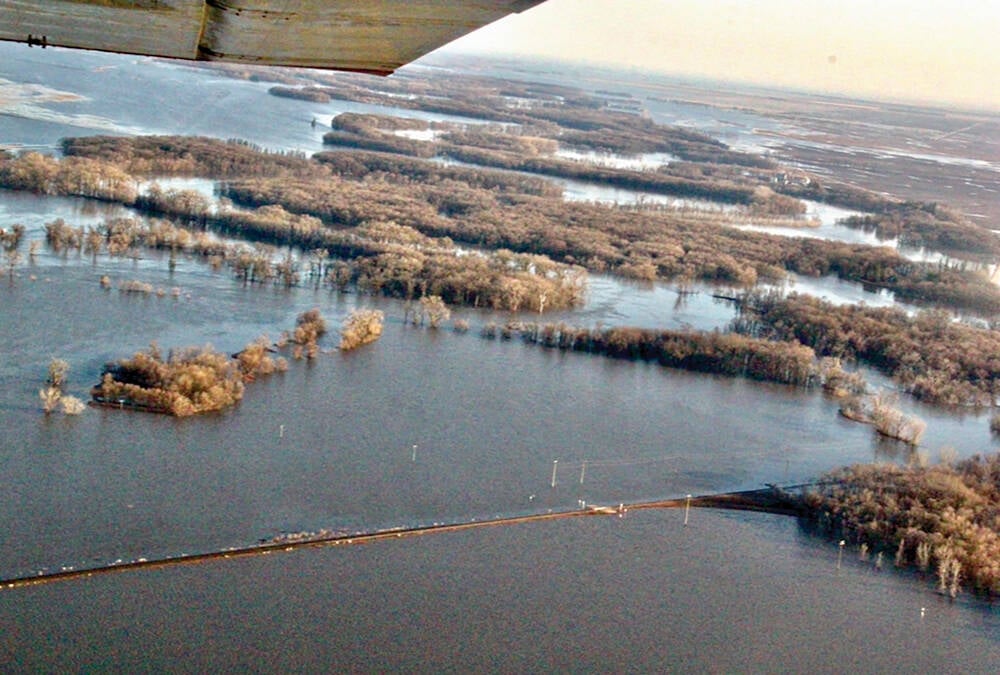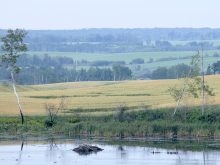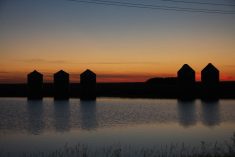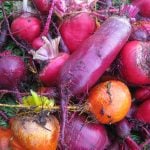BUSBY, Alta. – Tom and Irene McMillan don’t just check the weather for their northern
Alberta farm, they also check the forecast in
Saskatchewan where they’ve just bought a second farm.
If it’s too wet to seed, spray or harvest in Alberta, chances are the weather is better in Saskatchewan or the other way around.
After selling their laying chickens and quota, the couple was looking for land nearby to expand their 3,400 acre grain farm. With little land available near Busby, just north of Edmonton, they looked farther afield.
Read Also

Rural Manitoba resources slim on natural disaster planning
A study from Brandon University’s Rural Development Institute has found that many rural and small municipalities don’t have the staff or resources to make formal climate plans against natural disaster.
They looked in the Peace River area, but land prices had started to creep up. Then they started “poking around Saskatchewan,” said Irene.
By farming in another province, they hope to spread out the seeding and harvest season. Also key was that land prices were half of Alberta’s.
This spring they began seeding on their second 3,000 acre farm near Paynton, 400 kilometres east.
“The biggest thing is the ability to have a bigger variety of crops and have a chance to spread the risk,” said Tom, who was having lunch in
Alberta before heading to Saskatchewan.
There was a soaker rain in Alberta, but only a few drops in Saskatchewan and harvest could likely proceed.
Iron out the wrinkles
The couple estimates it will take about three years to get a system working to handle seeding and harvest on two farms.
This spring they planted similar crops in both locations. There is a seed drill at both farms and a third drill, modified into an air seeder by Tom, goes back and forth between the two farms to speed up seeding.
“We have good capacity. At least that’s the plan,” said Tom.
“We’ve kept it fairly simple to try and manage to muddle through this year,” he said.
With a new large sprayer, they also hope to do most of the spraying on both farms.
Harvest is different. With the chronic shortage of farm help, custom combiners will harvest the Saskatchewan crop.
“This is the safest way to do it,” he said.
“Then we’ll bite off another chunk,” said Irene.
Farming in a new province, in new fields, with new options for grain sales has been an exciting venture for the couple. They managed to get stuck in their Saskatchewan fields several times. The Busby land has a solid layer of hard pan. Not the Paynton farm.
“We have to get to know the fields,” said Irene, the chief tractor driver.
The couple has never seen No. 1 wheat on their Busby farm. Top grade wheat is the norm in Paynton.
In Saskatchewan, they want to start experimenting with red lentils, flax and winter wheat, all crops they’ve never grown in Alberta.
The couple is also looking for a larger challenge. Laying hens provided a good, safe income, but looking after the hens and collecting eggs each day wasn’t what the couple wanted to do for another 40 years.
“I’d rather drive tractor for 18 hours than gather eggs for three,” said Irene. She likes the extra free time in the summer to spend with her son Adam, 12 and daughter Valerie, 10.
“It’s more exciting because it’s what we like to do. If we bought more chickens we would have been uninspired. This is something we want to do. Why not? We’re still young,” said Irene.
“It was either sit here and collect interest on our money, or do something,” she said.
“It’s been a great experience,” said Tom.
“So far it’s working,” he said.














